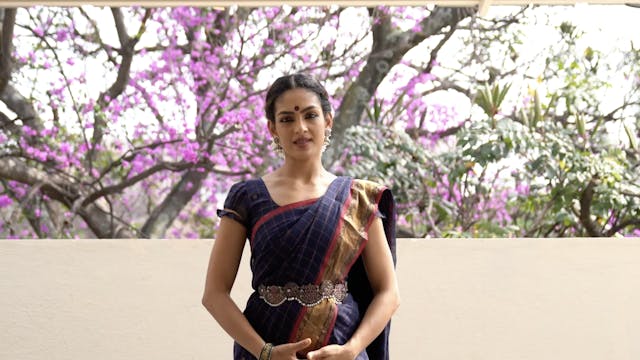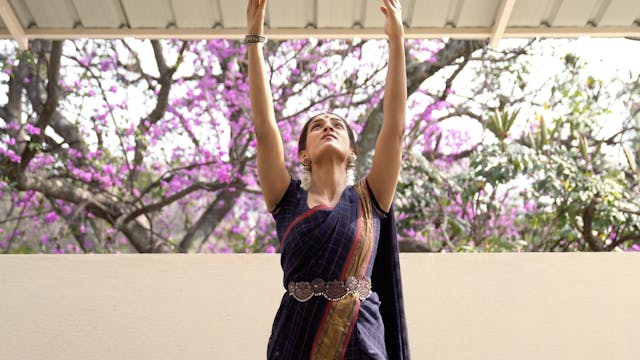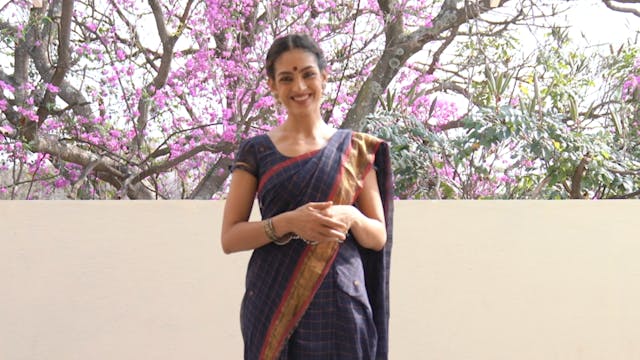The stomach is considered one of the Upāngas, or minor limbs.
The movements are used primarily to communicate meaning in the context of gesture.
Please refer to the Shloka below for pronunciation. Please note that the separate movements of the head when put together in a Shloka form 'Sandhis', or compound words in the Sanskrit language. Words like 'ca', 'thatha', mean "and", "also". The separate words for each movement are also given below the shloka.
Ksāmam khalvam ca pūrnam ca samproktamudaram tridhā
Tanu ksāmam natam khalvam pūrnamādmātamucyate
Ksāma
Khalva
Pūrna
Up Next in Natyashastra: Angas & Upangas
-
Bāhu bheda Introduction
The arms considered one of the Upāngas, or minor limbs, has many movement possibilities enumerated in the Natyasāstra.
The movements are used primarily to communicate meaning in the context of gesture and also clear articulation in dance or nritta.
-
Bāhu bheda Shloka
The arms considered one of the Upāngas, or minor limbs.
The movements are used primarily to communicate meaning in the context of gesture and also clear articulation in dance or nritta.
Please refer to the Shloka below for pronunciation. Please note that the separate movements of the head when...
-
Ćarañāguli bheda Introduction
The toes are considered one of the Upāngas, or minor limbs.
The movements are used primarily to communicate meaning in the context of gesture.


